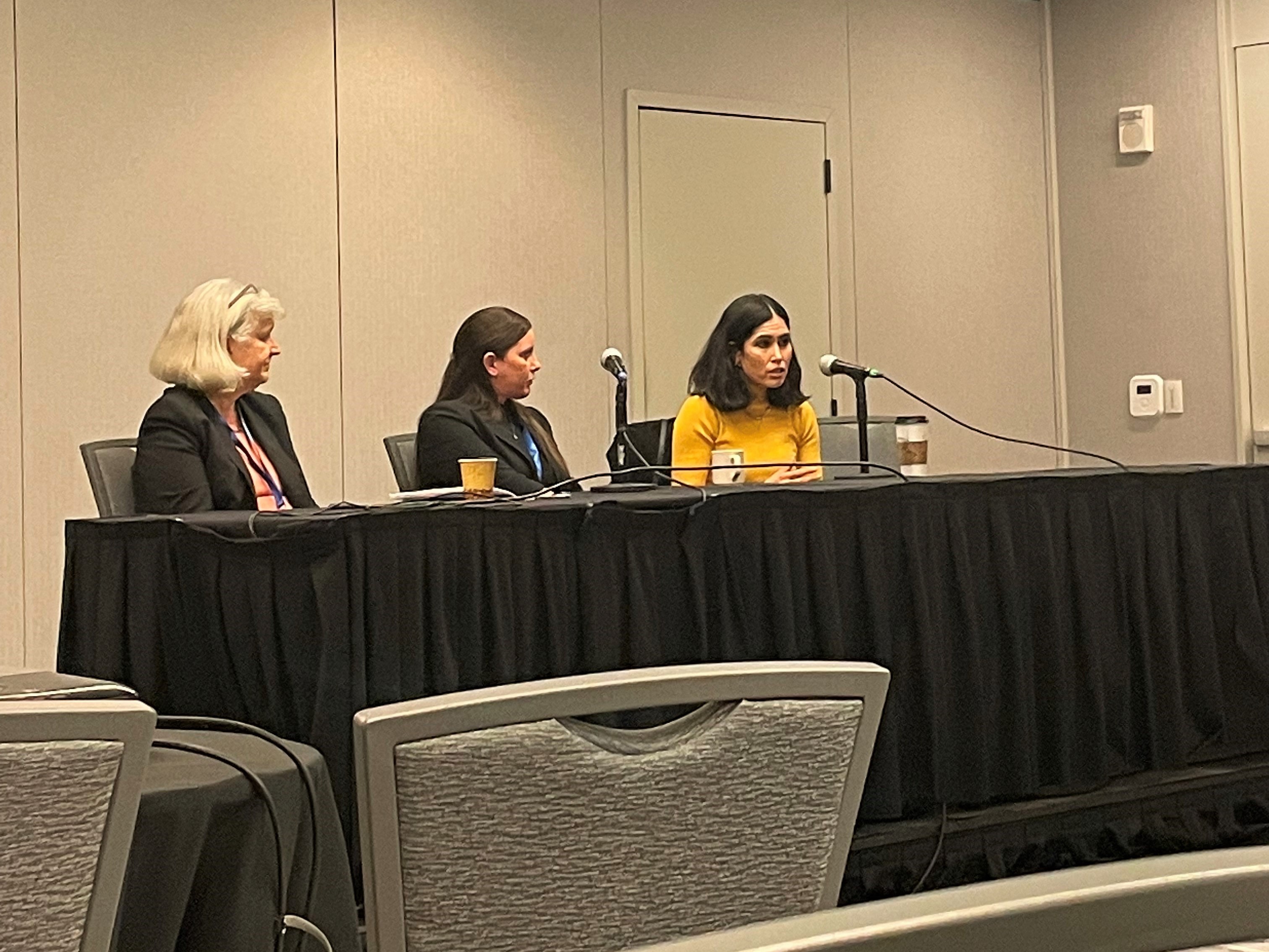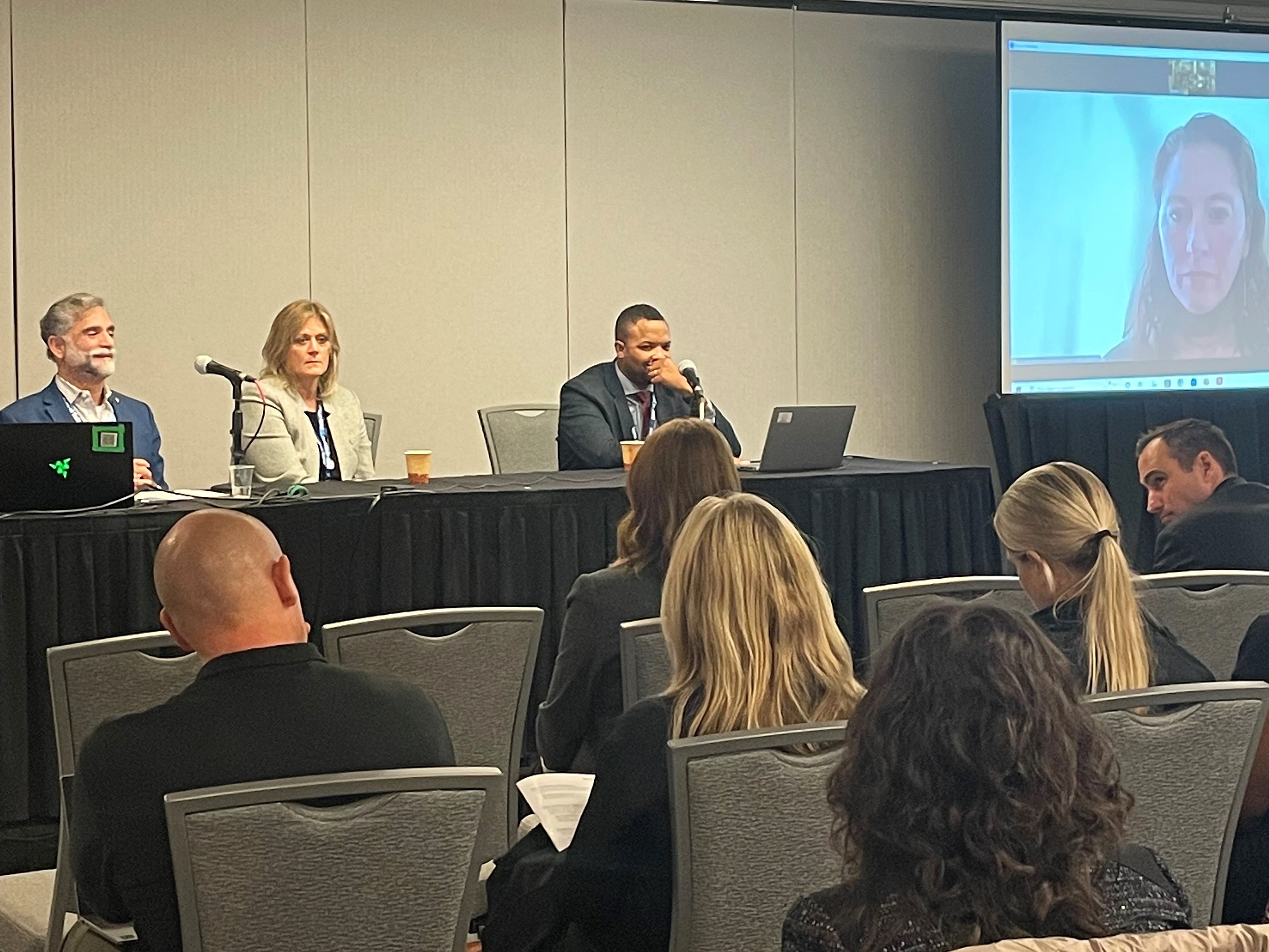2022 Oregon State of Reform Health Policy Conference

Regence Health Policy Center is a sponsor of the 2022 Oregon State of Reform Health Policy Conference. This week, our team had the opportunity to attend this year’s event, held in Portland, OR. The State of Reform conference is focused on bridging the gap between health policy and political reality. Policymakers and stakeholders from around the region gathered to discuss the most important topics in Oregon health policy including workforce challenges facing many industry sectors with special focus on health care staffing, strategies to address the behavioral health and mental health of Oregonians, opportunities to implement alternative payment models, and progress toward Oregon’s cost growth target.
Two Regence BlueCross BlueShield in Oregon representatives participated in the event. Dr. Jim Polo, Executive Medical Director, moderated the panel discussion “Innovations in Health Care Delivery post-COVID.” Eleanor Escafi, Director, Innovations, participated in “How do we move forward with payment innovation,” sharing Regence’s work in adoption of value-based payment models. Below are a few highlights from these panels.
Health care delivery post-COVID
From telehealth to remote patient monitoring, new innovations are reshaping care delivery and coordination. Dr. Polo, Executive Medical Director, highlighted that many of these innovations existed and were available prior to the pandemic, but regulatory and policy changes made since 2020 have allowed more rapid adoption and expansion of these services. The future of health care delivery will be a hybrid model, combining traditional brick and mortar services with programs such as hospital at home and virtual care.
Moving care out of hospitals and into the home: Even as the peak of the pandemic has passed, hospitals remain capacity constrained and are continuing to turn to brick and mortar alternatives that best serve their patients. Regulatory allowances enacted during the pandemic combined with rapid acceleration and adoption of new technologies, allowed hospitals to quickly implement hospital at home programs. These models preserve hospital capacity for the highest acuity patients, reduce hospital-acquired infection rates, reduce readmissions, reduce overall costs and improve patient satisfaction.
Virtual care and telehealth are here to stay: Dr. Polo highlighted that in December of 2021, 71% of all behavioral health appointments and 21% of all medical appointments were delivered virtually. Regence recognizes telehealth and virtual health programs are here to stay.
The goal (and the challenge) is a seamless experience: Consumerism is a driver of health care service delivery and is increasingly informing the ways in which the health care system meets patients’ needs. Technologies are becoming more widely available that allow for patients to receive care in their preferred setting rather than traveling to a brick-and-mortar location. Mobile imaging, mobile laboratories, virtual telehealth allowing almost instant access to a provider, and remote patient monitoring devices are all useful tools to improve the patient experience and are available to Regence members. However, one challenge remaining is the ability to integrate these different service types into a system not necessarily built to accommodate this type of innovation. The ultimate goal is a seamless experience for patients, payers and providers, but the technology, while advancing, is not yet there.
A skilled workforce is critical: The pandemic has exacerbated workforce issues across all industries, and health care has been impacted the most, second only to the hospitality industry. In order to successfully implement many of these innovations, several staff members are needed. While some efforts are underway to bolster the workforce, this will be a critical component to the health system’s ability to continue to innovate and adopt new models of care.

Moving forward with payment innovation
Oregon has implemented specific goals to advance broader adoption of value-based payment models. In 2021, Oregon established the Value-Based Payment Compact, which is a voluntary commitment by payers and providers to expand value-based payment models, meeting specified targets and timelines over the next 4 years. During this discussion, Eleanor Escafi, Director of Network Innovation, shared Regence’s involvement with the VBP Compact and learnings from implementation of value-based payment models.
Trust is the foundation: Successful design and implementation of these payment models is built upon an established, cooperative, trusting relationship between the provider and payer.
Data quality and data sharing are key: The collection of quality data combined with the ability to share this data in real-time are key to ensuring both parties have access to the information they need to best serve members. Both parties need to be able to trust their data is not only accurate but also depicts the progress and performance. There are challenges to ensuring data is useful and continued work is needed to be able to parse data to best understand that patients who are represented within a data set.
There is no one-size fits all solution: Regence recognizes that all providers have varying needs in a payment arrangement including different levels of data, tools and interactions with the payer partner. Regence works to accommodate each level of desired support, actively seeking and incorporating feedback from providers in design. The payment model should be matched to mutually aligned goals within a particular category of care, and a model built to support these needs. For example, a large maternity care practice may benefit from one payment structure whereas a small primary care practice may benefit from a different model.
Targets provide a North star: The Oregon value-based payment targets are a helpful rallying point for organizations implementing value-base payments. It is a challenge to unify systems, but there are efforts underway to align and decrease administrative burden to continue to grow adoption of these models. Regence participates in stakeholder groups in Oregon and Washington to share learnings and best practices for the advancement of value-based care.
With these alternative payment models providing a path to funding health care services outside of the legacy fee-for-service setup, payors and providers are able to partner and improve health care outcomes outside of the traditional bounds of reimbursement.
Regence Health Policy Center will continue to highlight top issues in health policy facing our market states, bringing thought leaders to the table and posing solutions to promote affordable, accessible, and person-focused care.


